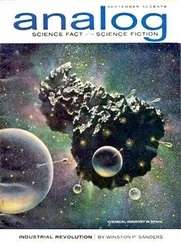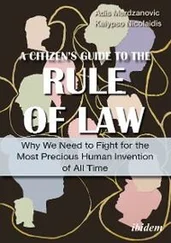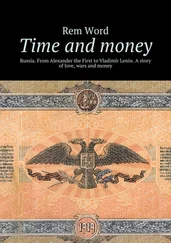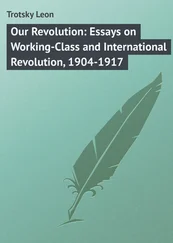Casey repeatedly flew to Pakistan to meet with Zia and the head of ISI to take the fight to the enemy. He not only supported the Islamic fighters but, as a devout Catholic, believed a combined squad of Christian/Islamic militants were a sure bet to take down the godless Soviets.
By 1984 Casey ratcheted up U.S. contributions to $200 million, with a matching contribution pledged from the Saudis. Zia funneled the money — after taking his cut — to the Islamic fighters, virtually excluding the moderates and non-religious elements. One of those excluded was Ahmed Shah Massoud, perhaps the most successful and famous of the Afghan fighters. He came from the Panjshir Valley, a narrow strip north of Kabul along the Panjshir River. A religious Muslim, he fled to Pakistan when the pro-Communist Afghan government cracked down on the fundamentalists in the early 1970s. But unlike other Afghan fundamentalists, he held a more moderate line.
Shortly after the Soviet invasion, the twenty-seven-year-old Massoud took thirty supporters, a handful of rifles, and pocket change into the valley to fight the Reds. The Panjshir Valley occupies an important strategic position in Afghanistan. Along either side stand steep, high mountains where rebels can hide with impunity. From their mountain hideouts they can sweep down and attack Soviet convoys along the Salang Highway, the only route from Kabul to the Soviet Union in the north. This lifeline of the Soviet occupation was laid bare to the crafty Massoud. He captured weapons for his growing army and raided Soviet columns without retribution.
To rid themselves of this pesky rebel, starting in 1980 the Soviets threw attack after attack against Massoud. Each time they had him seriously outgunned; he not only survived but also became stronger. Rebels flocked to him as his reputation as a fighter grew. With his battlefield successes he acquired the very cool nickname of “Lion of the Panjshir.”
Frustrated, in 1982 the Soviets launched a massive push and threw 10,000 Soviet troops, 4,000 Afghan troops, tanks, helicopters, and fighter jets at the Lion. But Massoud, tipped off by informants in the Afghan army, hid his fighters in the mountains and swept down on the Soviet column in the narrow valley, slicing them to pieces and capturing tons of equipment. Once again, the defeated Soviets slouched back to the safety of Kabul where they resumed their scorched-earth policy in an already scorched country.
A huge Soviet offensive in 1984 punished Massoud, after he broke off a short-lived truce. The Russians introduced two new weapons: thousands of special forces troops with the skill and dedication to take on Massoud’s men in the mountains, and attack helicopters that could withstand antiaircraft fire. Now it looked as if the Soviets might actually win the war. Massoud barely hung on. By this time the Soviet price for propping up their puppet was more than steep. A CIA report stated the Soviets had suffered 17,000 soldiers killed or wounded, and lost up to 400 aircraft, 2,750 tanks, and 8,000 other vehicles.
The new Soviet weapons forced Casey to push more chips to the middle of the table. More money than ever flowed, with Texas Democrat Charlie Wilson as chief war booster from his perch on the committee that controlled the budget. Casey also sent in sophisticated communications equipment along with experts on explosives and commando warfare. What had started as a mom-and-pop operation had mushroomed into a full-fledged U.S. government agency. It also became impossible to pretend to the Soviets that the United States was not involved. Congressmen inspected training camps in Pakistan, journalists spent weeks with the rebels, and President Reagan, in his best “win one for the Gipper” voice even pronounced the mujahideen “Freedom Fighters.” Casey and Zia glowed.
As the war ground on, life for the Soviet soldiers became intolerable. Their enemy were ghost soldiers who appeared from nowhere and just as quickly vanished. Armed with U.S.-supplied sniper rifles, rebels picked off Soviet officers by the dozens in Kabul. Death hung around every corner for the Soviets. Clever bomb makers fashioned plastic explosives into ordinary objects — pens, cigarette lighters, thermoses — and sold them to the Soviets. Many died while writing letters home; others were poisoned in restaurants. Soviet morale plummeted as despair and drug abuse swept the ranks. Word of the failure seeped into the Soviet press, and the citizens back home began to notice that their country was fighting a disastrous foreign war. To stop the slide, the Soviets pushed Babrak Karmal into retirement and replaced him with head of the Afghan secret police, Najibullah, the one-named torturer.
As the war expanded, it grew from a Soviet/Afghan fight into one embraced by the entire Islamic world. Afghan leaders flew to Saudi Arabia for fund-raising tours at mosques and returned flush with cash. But more important, the Arab countries sent their young men. Spirited with dreams of fighting the godless invaders, these young men flooded to U.S.-financed terror camps along the Pakistan/Afghan border ready to take up arms against the hated Soviets. These rebels studied the tricks of guerrilla and terrorist warfare from Pakistani trainers, and absorbed the credo that Islamic fighters should fight all nonbelievers. One of the newcomers was a tall, very rich Saudi named Osama bin Laden.
As the seventh year of the war sped along, what had been a secret CIA operation to fund a small group of Afghan fighters had blossomed into a U.S.-financed effort to equip, house, and train Islamic fundamentalist warriors without any concern where these thousands of soldiers would end up and who they would fight. Blowback hung in the air.
But the Soviet dream of empire died hard. Seeing that the rebels needed a more potent weapon capable of destroying Soviet helicopters and aircraft, the United States began supplying Stinger missiles to the Afghans in the fall of 1986. Few weapons altered the war as much as the Stinger. Once the cheap, lightweight, shoulder-fired weapon entered the fray, they immediately turned the tide against the Russians as the rebels knocked down hundreds of Russian helicopters and aircraft. Missile-fear forced the Soviets to keep their aircraft above the missile’s 12,500-foot ceiling, meaning they had minimal impact on ground operations. The Soviets never developed a way to counter the Stingers.
RECOVERING THE STINGER MISSILES
After the Soviets took off, the CIA realized that it might not be prudent to leave thousands of these deadly missiles in the hands of Islamic terrorists. Congress secretly authorized millions of dollars to buy back Stingers. The CIA, falling back on its old ways, outsourced the process to Pakistan’s ISI, who scoured the back roads of Afghanistan looking for anyone with a missile stashed under his bed. The CIA paid between $80,000 to $150,000 per missile, with ISI taking a commission that would make a loan shark blush. In some years the United States spent as much buying missiles as it spent on humanitarian aid in the country. And where did all the money go? To the mujahideen and their new legions who used it to buy more weapons. Despite the recall, the CIA failed to round up all the Stingers. A few made their way to a foreign country where they were dissected, copied, and eventually produced locally. That country: Iran.
Back at the Kremlin, the new Soviet leader Mikhail Gorbachev was doing his best to destroy the empire from within. He knew the country had to undertake dramatic economic reform in order to stay alive and compete with the West. At the same time, Gorby allowed more openness in the country, including more liberalization of the press. As a result, everyone knew the catastrophe that was taking place to the Russian army, but the hard-liners refused to surrender to reality. For Gorby it was not a question of if they would withdraw but when and how , without sparking a coup against himself.
Читать дальше












